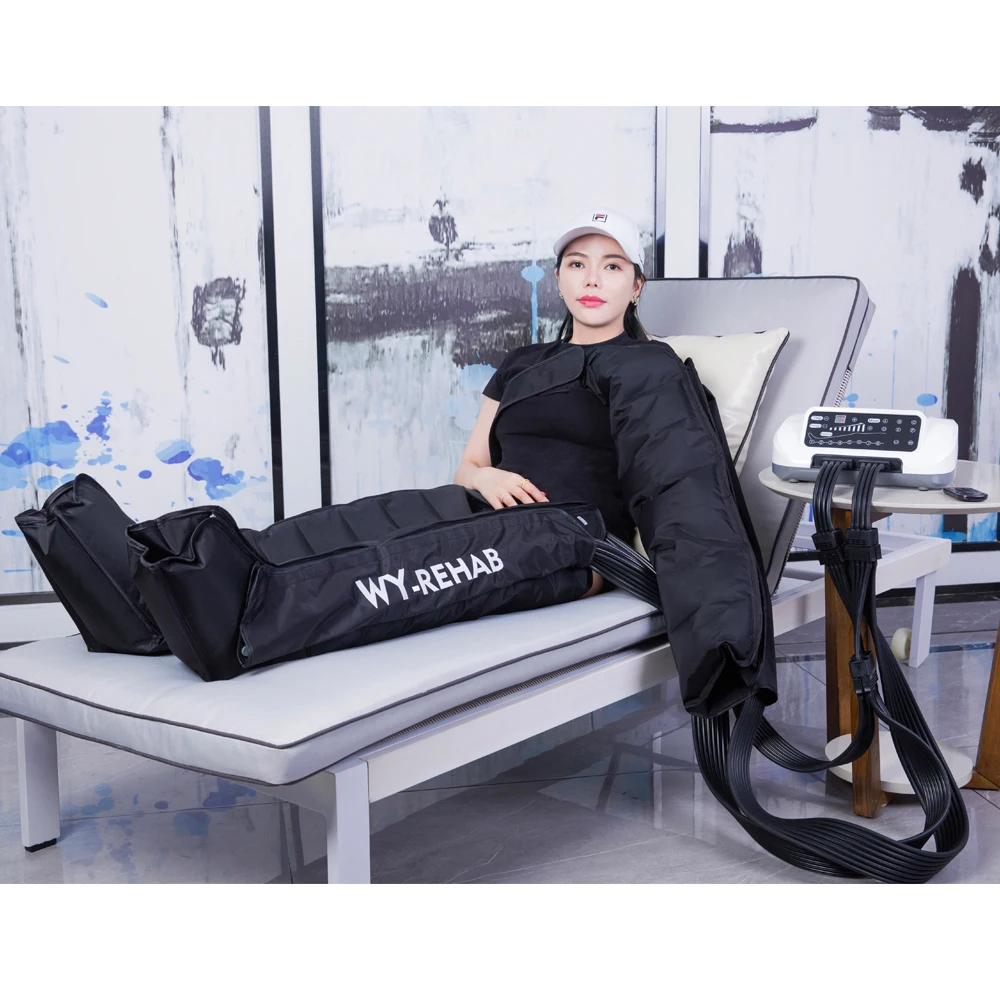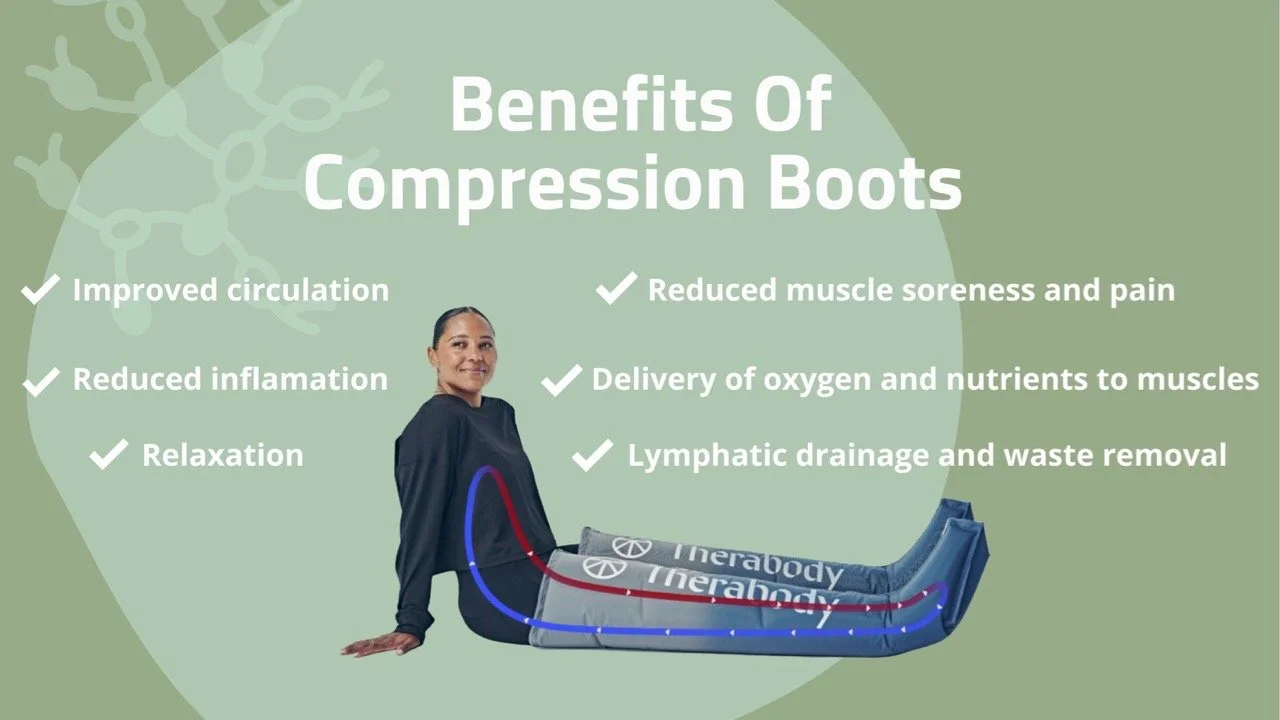Compression boots are a popular recovery tool used by athletes and individuals seeking to improve their health and wellness. Learn all about compression boots, how they work, and the benefits they offer in this comprehensive guide.
Table of Contents
- Introduction
- What are Compression Boots?
- How Do Compression Boots Work?
- What are the Benefits of Compression Boots?
- Improved Circulation
- Reduced Muscle Soreness
- Enhanced Recovery
- Reduced Inflammation
- Relief from Chronic Conditions
- Improved Performance
- Increase flexibility
- Improved recovery
- Enhance lymphatic drainage
- Reduced risk of injury
- Relaxation
- How to Use Compression Boots
- Popular Brands of Compression Boots
- FAQs about Compression Boots
- Conclusion
Introduction
Are you interested in improving your health and wellness? If so, you might want to consider investing in a pair of compression boots. Compression boots are a relatively new technology that have become increasingly popular in recent years. Originally designed for use in the medical field, compression boots have since been adopted by athletes and fitness enthusiasts as a tool for improving recovery time and overall performance. Compression boots are a type of wearable technology designed to improve circulation, reduce inflammation, and speed up the recovery process after a tough workout or injury. In this guide, we will take an in-depth look at what compression boots are, how they work, and the benefits they offer to your health and wellness.
What are Compression Boots?
Compression boots are devices that apply pressure to the lower limbs through the use of inflatable chambers. The pressure is applied in a wave-like motion, starting at the feet and moving up towards the hips. This wave-like motion is designed to mimic the natural pumping action of the muscles in the legs, which helps to increase blood flow and reduce inflammation.
Compression boots are essentially inflatable sleeves that wrap around your legs, from your feet up to your thighs. They work by inflating and deflating the sleeves, which creates a squeezing action that mimics the natural pumping mechanism of your circulatory system. This squeezing action helps to increase blood flow and lymphatic drainage, which can reduce inflammation, decrease swelling, and speed up the healing process.
Compression boots are devices that use intermittent pneumatic compression to create pressure at different points on the leg, helping to improve blood flow to your lower half. They work by using air pressure to control the blood circulation in your legs. As each chamber in the boots fills with air and compresses more tightly, it prevents a large amount of blood from circulating through that part of your body. The goal is to recover faster, feel less sore and help you perform better during your next workout.
How Do Compression Boots Work?
Compression boots work by applying pressure to the lower limbs, which helps to increase blood flow and reduce inflammation. The pressure is applied in a wave-like motion, which mimics the natural pumping action of the muscles in the legs. This wave-like motion helps to flush out metabolic waste products, such as lactic acid, which can accumulate in the muscles during exercise.
Compression boots typically come with a control unit that allows you to adjust the intensity and duration of the compression therapy. Some models even come with pre-programmed massage settings that can further enhance the benefits of the therapy.
What are the Benefits of Compression Boots?
Compression boots offer a range of benefits to your health and wellness. Some of the key benefits of compression boots include:

Improved Circulation
The squeezing action of compression boots helps to increase blood flow and lymphatic drainage, which can improve circulation throughout the body. This increased circulation can help to reduce inflammation, decrease swelling, and speed up the healing process.
Reduced Muscle Soreness
Compression boots can also help to reduce muscle soreness and stiffness after physical activity. The increased blood flow helps to remove waste products from the muscles, which can help to speed up the recovery process.
Enhanced Recovery
Compression therapy has been shown to be an effective way to speed up the recovery process after a tough workout or injury. By increasing blood flow and lymphatic drainage, compression boots can help to reduce muscle soreness and fatigue, and promote faster recovery.
Reduced Inflammation
Inflammation is a natural response to injury or infection, but when it becomes chronic, it can lead to a host of health problems. Compression therapy has been shown to reduce inflammation and improve overall immune function, which can help to prevent chronic disease.
Relief from Chronic Conditions
Compression boots can also provide relief for those who suffer from chronic conditions such as lymphedema, venous insufficiency, or peripheral artery disease. The compression can help to reduce swelling and improve circulation in the affected areas.
Improved Performance
Many athletes use compression boots to improve their performance. By improving circulation and reducing muscle fatigue, compression therapy can help athletes to train harder and recover faster, leading to improved athletic performance.
Increase flexibility
Compression boots can increase flexibility by helping you perform better during your next workout.
Improved recovery
Compression boots enhance the recovery process by reducing inflammation, muscle soreness, and improving blood flow in your legs. This helps you recover faster after a workout or a sports event.
Enhance lymphatic drainage
Compression boots can help remove waste products, inflammation and swelling by engaging a lymphatic flush which enhances healthy blood flow back into the location.
Reduced risk of injury
By improving blood flow and reducing inflammation, compression boots can help prevent injuries caused by overuse or repetitive stress.
Relaxation
Compression boots can also provide a relaxing experience, reducing stress and improving your overall well-being.
How to Use Compression Boots
Compression boots are relatively easy to use, but it is important to follow the manufacturer’s instructions carefully. Here are some general tips for using compression boots:

- Identify the correct compression sleeve designed for your leg (Don’t use the arm or hip sleeve): Compression boots come in different sizes and shapes. Make sure you choose the right size and shape that fits your leg. You can check the manufacturer’s website for sizing charts and recommendations.
- Locate the air compression control unit: The control unit is usually located near the boots. It’s where you can adjust the pressure and intensity of the air compression.
- Take any objects you have out of your pockets such as wallet, car keys, etc.: This is to avoid any discomfort while using the boots.
- Connect the hose to the compression boot: The hose is usually attached to the control unit. Make sure it’s securely connected to the boot before turning on the machine.
- Power on the control unit and calibrate the intensity to your desired setting: Once everything is set up, turn on the machine and adjust it to your desired setting.
- Start with a low pressure and gradually increase it as you become more comfortable with the sensation.
- Use the boots for 20-30 minutes at a time, 2-3 times per week.
- Wear loose-fitting clothing to avoid restricting blood flow.
- Drink plenty of water before and after using the boots to help flush out toxins.
- Avoid using the boots if you have any injuries or medical conditions that could be aggravated by the compression.
- You can use your compression boots in any comfortable place in your home.
- You can use both legs simultaneously or one leg at a time and you should sit in a comfortable position.
- There’s no need to elevate the legs when using compression boots.
Popular Brands of Compression Boots
Some popular brands of compression boots include Normatec 2.0 Compression Boots, Therabody RecoveryAir System, Rapid Reebot Recovery System, Triducna Compression Massager, Flyte Recovery Boots System, Fit King Leg Air Massager and Kingsfield Compression Boots.
- Normatec 2.0 Compression Boots: Normatec’s recovery boots are designed to help you recover faster after a strenuous workout.
- Therabody RecoveryAir System: Therabody has recently gotten into the compression boot game with its Recovery Air boots.
- Rapid Reebot Recovery System: Rapid Reboot offers a variety of compression boots that can help you recover faster after a workout.
- Triducna Compression Massager: Triducna offers a variety of compression massagers that can help you recover faster after a workout.
- Flyte Recovery Boots System: Flyte offers a variety of compression boots that can help you recover faster after a workout.
- Fit King Leg Air Massager: Fit King offers a variety of leg air massagers that can help you recover faster after a workout.
- Kingsfield Compression Boots: Kingsfield offers a variety of compression boots that can help you recover faster after a workout.
FAQs about Compression Boots
Question: Are Compression Boots Safe to Use?
Answer: Yes, compression boots are generally safe to use. However, if you have any underlying health conditions or concerns, it’s always a good idea to check with your doctor before using them.
Question: How Often Should I Use Compression Boots?
Answer: The frequency of use will depend on your individual needs and goals. Some people use compression boots daily, while others use them only after workouts or when recovering from an injury.
Question: How Long Should I Use Compression Boots?
Answer: Again, this will depend on your individual needs and goals. Most people use compression boots for 30-60 minutes at a time, but some may use them for longer periods. According to an article by The Wired Runner, compression boots can be used for between 10 – 60 minutes a day. Most at-home recovery boot systems will come with 10-, 20-, and 30-minute time settings. However, it’s best to consult your doctor or physical therapist for specific recommendations based on your individual needs.
Question: What are the side effects of Compression Boots?
Answer: According to an article by Healthline, compression therapy works and can improve the quality of life for people with many conditions. However, there are some risks associated with compression therapy such as direct local muscle pressure from intermittent pneumatic compression devices which can cause muscle necrosis and loss of capillary integrity, leading to massive edema and increased compartmental pressures.
Question: How much does a Compression Boots Cost?
Answer: According to an article by Runner’s World, some of the most popular systems cost around $1,000. However, prices can vary depending on the brand and model you choose.
Conclusion
Compression boots are a promising technology that can offer a wide range of benefits for those looking to improve their health and wellness. By improving circulation, reducing inflammation, and enhancing recovery, compression therapy can help you feel better and perform at your best. However, it is important to use them correctly and follow the manufacturer’s instructions carefully to avoid any potential risks or complications. If you are interested in trying compression boots, be sure to consult with your doctor first to ensure they are safe for you to use.
